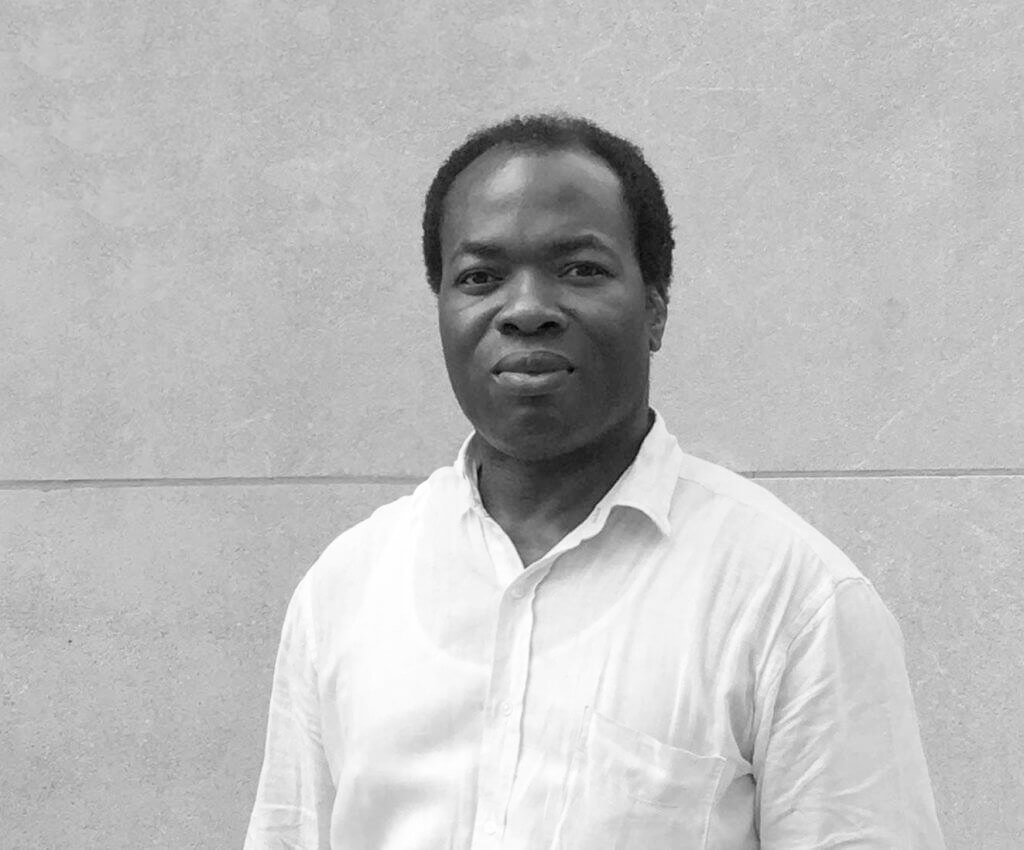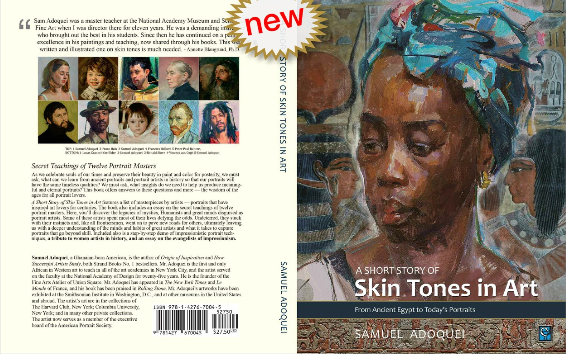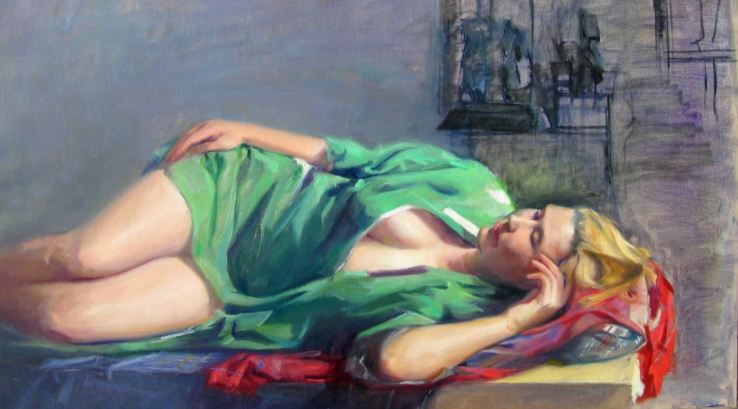Interview: Samuel Adoquei Implores Artists to Consider Skin Tones to Continue the Betterment of Art and Humanity
What draws you to figurative art and portraiture over other subjects?
The desire to record human lives in paint and color, to witness up close and experience their true journey is humbling and educational. It is a blessing to come in contact with people of different backgrounds. It allows me the opportunity to see the hidden treasures of people’s true beauty.
What I wish to portray in my portraits is to honor the pursuit of survival and happiness each person endures. Evolution has forced all members of humanity to flock to our new oasis of concrete, steel, and glass to find the right means to live. Alongside that, the mosaic of new cultures and cathedrals of different skin tones prove the advancement of human evolution.
Theologians, teachers, doctors, scientists, artists, judges, and politicians now come from all walks of life, and the shades, tones and colors of their skin range from the darkest browns to the lightest pinks. Many people have worked tirelessly to make this coming together possible, and there are humanitarians continuing to do the work so that peaceful and harmonious relationships among us keep improving as complexions multiply. To maintain this advancement, I believe artists must help through being intentional of their choice of subject and messaging in their work.
Your latest book “A Short Story of Skin Tones in Art”, a book that discusses painting skin tones and the importance of understanding how to do it. Do you think that is missing in realist art?
Today, a deep understanding of skin tones is a lot more prevalent today in realism than it was even 100 years ago, clearly. But what I’d like to see is exploration of skin color as a specific pursuit for the purpose of bringing awareness to the beauty of other people.
For me, the love of people, the discovery and admiration of beauty in others who differ from me, are the only guarantors we can rely on for advancing our universe. History and life experience tells me that the beauty of skin tones is the most important quality humanity can trust in to deliver peace, love, and oneness in all.
For this purpose, the book is divided into three sections: differences between skin and flesh tones, how to mix skin tones, the future of portraiture and figurative painting as far as demands and expectations are concerned.
It also includes twelve revolutionary portrait masters every art lover and artist must know. I believe artists celebrate the souls of our times and preserve their beauty in paint and color. We must go to the source of portraiture to understand why the ancient Egyptians, for example, demanded accurate skin tones and flesh tones.
When reading it, I want the reader to ask themselves: How can we, as painters, create lasting imagery from today’s influential faces as artists of the past have? Who are the masters we must be inspired by, to create meaningful and eternal portraits? Why do the gods of India have different skin tones? This book offers ideas to help artists create portraits that go beyond a simple likeness.
For this purpose, the beauty in skin tones could be the epiphany that represents our times. It is not because skin tones are missing in today’s figurative art. It is because it must be the vehicle in which artists use to find universal love in others.
It is obvious we have not yet shown hate the gift of evolution: the natural beauty of our creator’s other children. Today’s artists cannot wait and expect religion, science, and politicians to help our evolving and advancing universe. For these reasons, the book is a call to duty for artists to chip in, to help bring human beauty to all.
What does a strong understanding of skin tone bring to a painting?
There is a certain way of seeing and painting that a truly informed and enlightened artist is in possession of. It begins with the self. The sincere intent to bring out the beauty of another’s skin tone is noble – and a gift which reveals hidden treasures in skin tones other than our own, in paint and color.
In your own work, which is exceedingly skilled in alla prima painting, where do you leave technical training and let intuition take the wheel?
I realized earlier on in America, vision on a mission requires more than just showing off skills. Great ideas change lives. The importance of my vision, purpose of my gift and contribution to humanity and our culture determine whether I ask for what I want like a four-year-old with a limited ten-word vocabulary, or demand what I need like an eighty-year-old with authority. Honestly, I don’t feel the need to render every form or put every detail just because I can. If I could use the most economical means to make my vision accessible, why not?
To me, it is best to describe vision and thoughts simply, to promote an understanding that doesn’t get in the way of the exterior. It is similar in writing, where the wise are stingy with words not because they don’t have access to the dictionary, but because with economy they can feed the imagination more than content.
This is totally different from my teaching philosophy. In teaching, I firmly believe that the student must have super skills to enjoy freedom to conjure his or her vision once out of the teacher’s studio.
What are the 3 most important things an aspiring artist should know?
Art is always evolving: AVOID DOGMAS. Separate art from technique. All in life is transactional, is the most important divine law every artist must keep in mind before any creative pursuit. Life will conspire to help you fulfill your dream when your vision, purpose, and mission align with the needs of the universe.
Use your talent to help chisel the rough edges of evolution so that humanity can evolve and advance peacefully. Let the mystery of the universe, the beauty of people, and the nature of things inspire you to serve humanity with your art. After all, we are creative servants: divine messengers gifted to fulfill advancing visions. Our creations must bring hope and joy to life – inspiring and encouraging others to take on their own meaningful missions. For you never know when the toot of your maker’s bus will be sent to bring you home.



